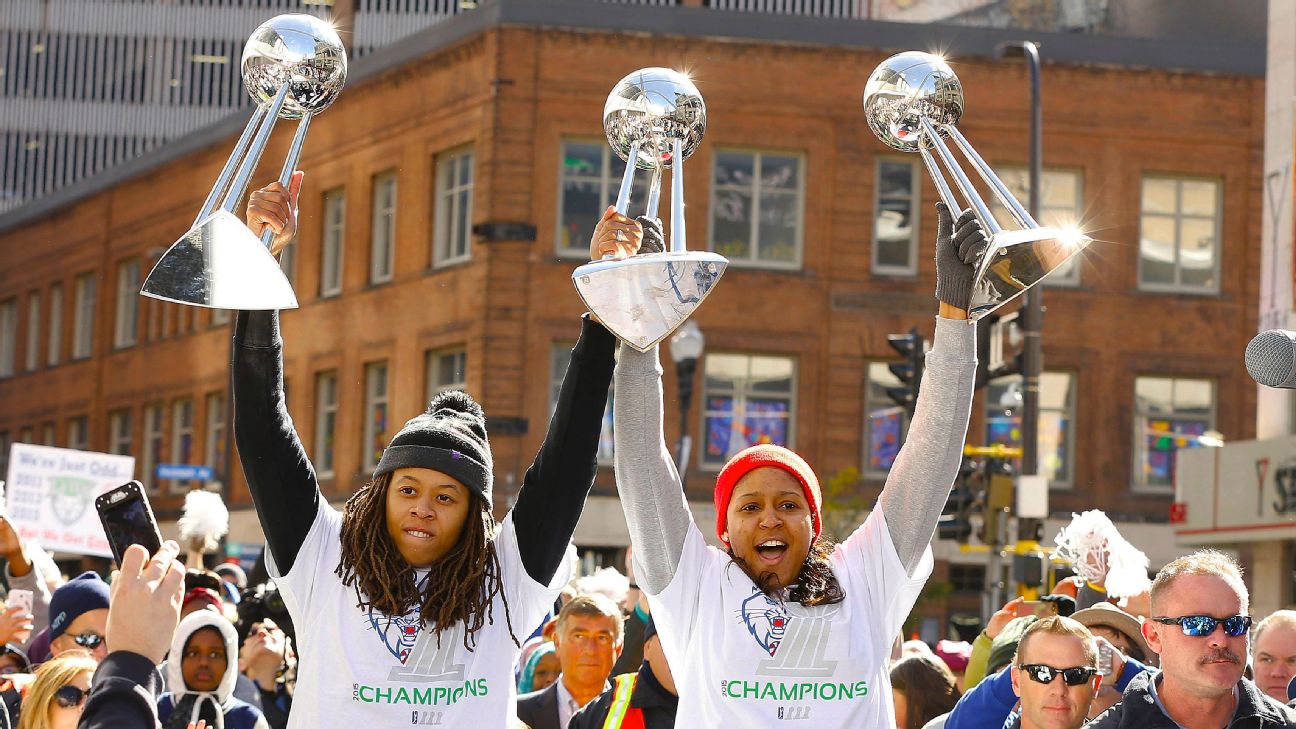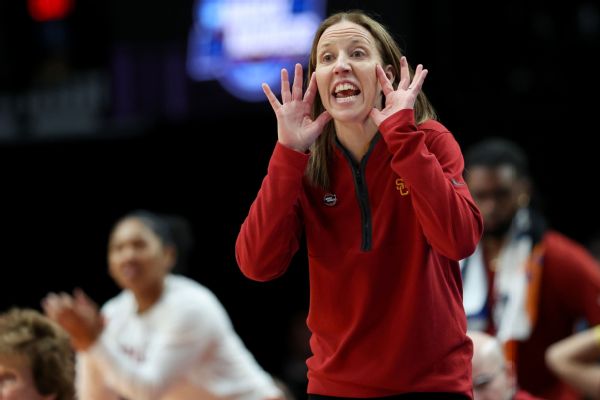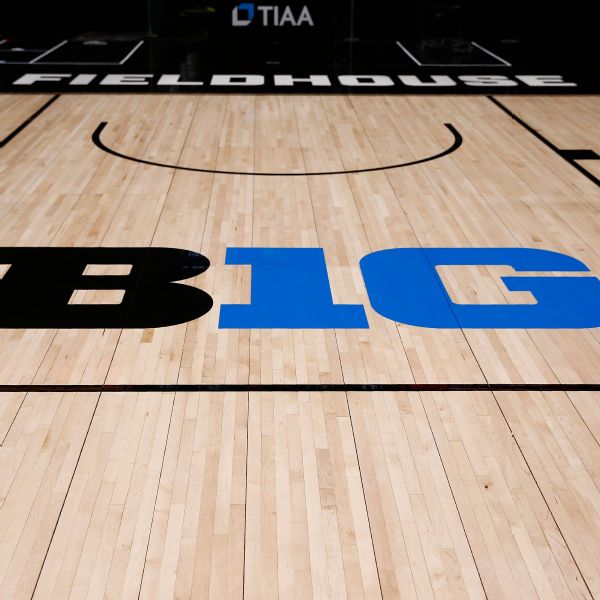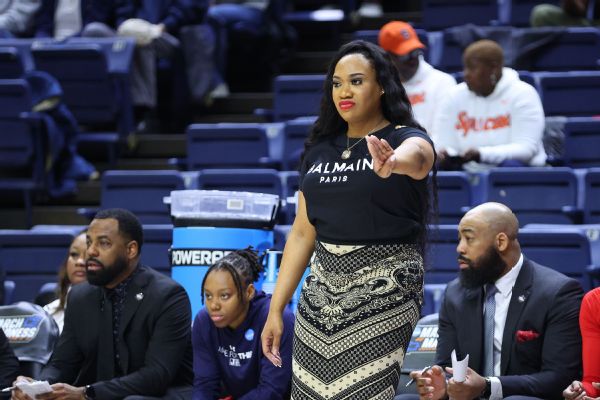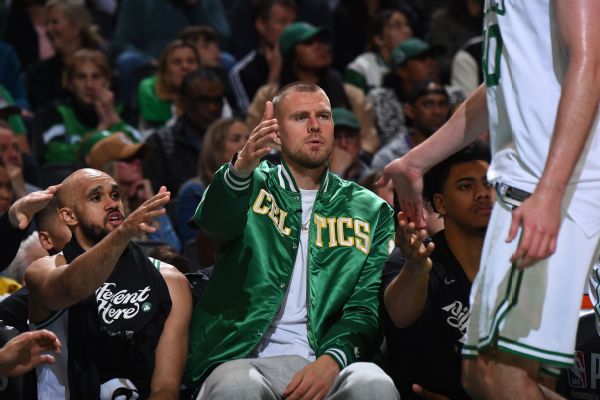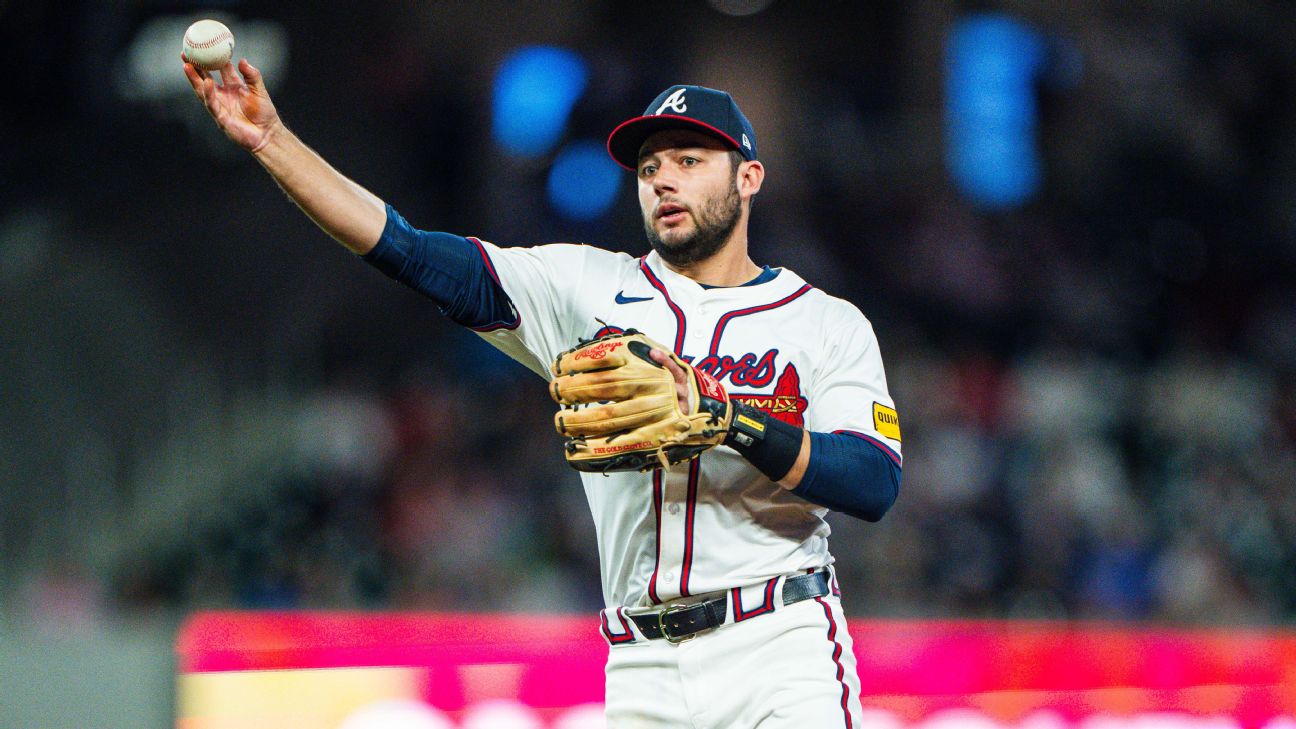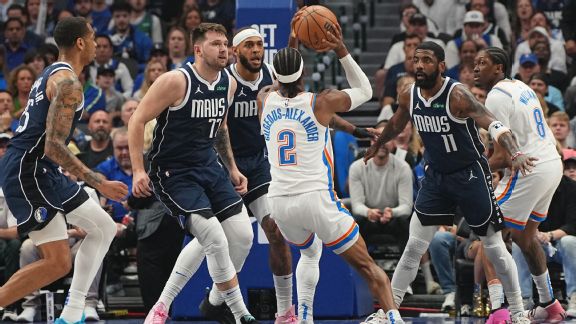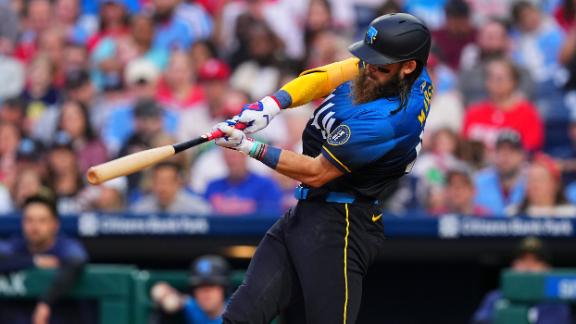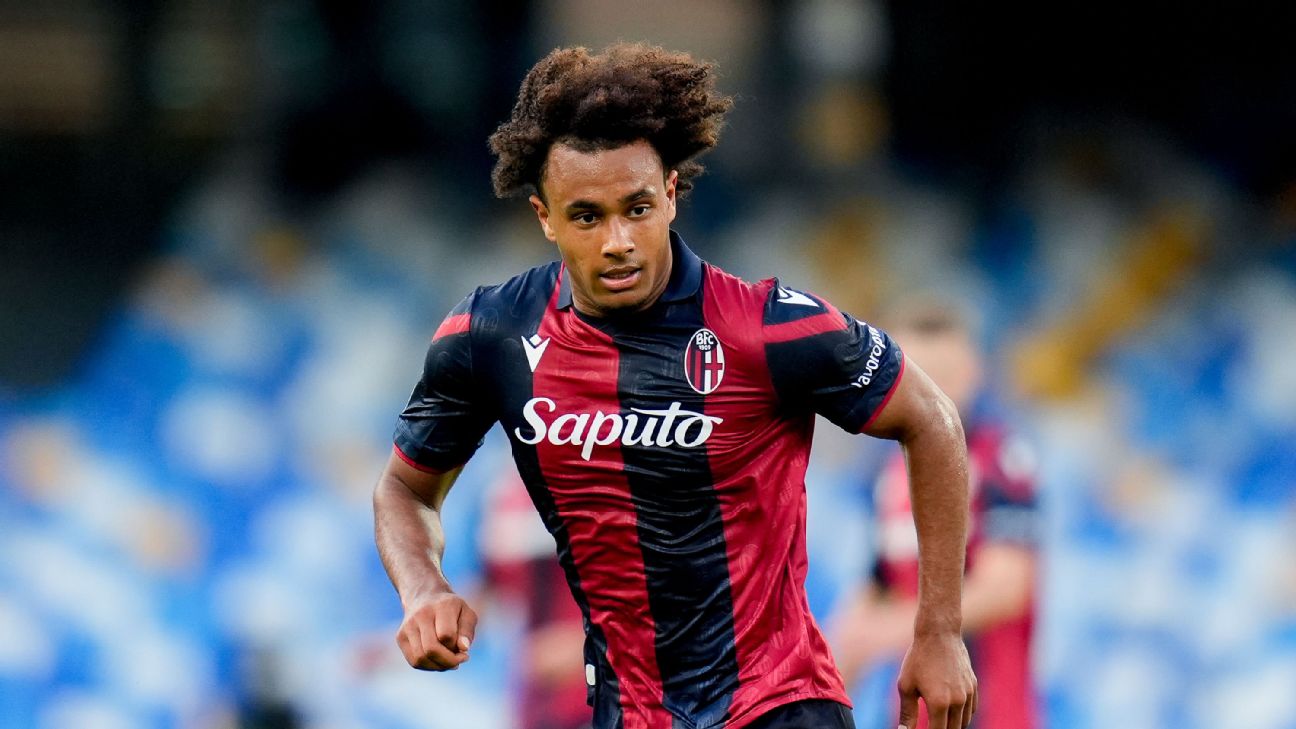![The USMNT Player Performance Index, vol. 2 [1500x1000]](https://a.espncdn.com/photo/2024/0501/soc_usmnt-performance_3x2.jpg)
Takeaways from the Panthers journey to the Eastern Conference finals early look at matchup with Rangers
We are back for the second edition of ESPN's USMNT Player Performance Index, our player-ranking model for the U.S. men's national team! But it's also the final edition we'll be releasing before the end of the 2023-24 European soccer season, which is less than three weeks away. Beginning and endings, all at once -- our new metric contains multitudes.
And in a way, it really does. We've come up with a broad way to judge the performance of every professional American men's soccer player on the planet. Or, at least, every American soccer player who plays for one of the 13,381 teams rated by Opta's power-ranking system.
Before the USMNT convenes for the Copa America this summer, let's take another big-picture look at the impact Americans are having across the world and how they compare to each other. Would you rather be riding the bench for a Premier League club (hi, Matt Turner) or tearing it up for a Championship team (hello, Haji Wright and Josh Sargent)?
We'll attempt to answer that question and hopefully learn about the current state of the American player pool along the way. But first, a refresher on how this all works and an explanation for why a handful of key players missed the cut.
Notable USMNT absences, and our methodology explainedJust as was the case on our previous list: no Tyler Adams!
Does this mean that Tyler Adams is not a top-50 USMNT player? No, it means that Tyler Adams has played 3.5% of the minutes for Bournemouth so far this season because of a hamstring injury. Adams' fellow 2022 World Cup-er, Jesús Ferreira, also misses out because he has only started two games for FC Dallas so far this season amid injuries.
As a reminder, we're not trying to rank the best USMNT players -- this isn't precisely who you'd want on the field at the Copa America. Instead, we're trying to accurately quantify who is in form and who isn't. More broadly, we want to provide an overview of which Americans are having the biggest impacts at the highest levels of the sport.
Individual statistics lack crucial context for player performance in soccer, so we've instead opted for a top-down approach. Our ranking model is built on three inputs: (1) How much does a player play? (2) How good is the team he plays for? (3) And how does the team perform when he's on the field, compared to off it?
The first one looks at the percentage of available minutes played. If a USMNT player is trusted to start and play significant minutes for his team, it's probably because he helps his team when he's on the field. But you can't provide any value if you aren't playing, no matter how talented you are. Plus, most of these leagues don't even have playoffs, so every game missed is a missed opportunity to help your team finish higher in the standings.
The second output is driven by Opta's power ratings, a ranking of every club team in the world calculated by combination of results, underlying performances and strength of opponent. Each result changes each team's rating, and the more a USMNT player is on the field for his club, the more he helps determine that rating.
The final piece of our index looks at the team's goal differential per 90 minutes when the player is on the field compared to when he's off it. Is his team better or worse when he plays?
Ultimately, our final ranking is calculated like this: Team strength (maximum value of 500 points), playing time (max of 100 points) and the on- or off-field numbers (max adjustment of 10 points, in either direction). Since the MLS season is only about 10 games old, the sample size is much smaller than the rest of the leagues involved, which makes both the ratings and the average playing time less reliable. To account for that, we've also slightly discounted each MLS team's ratings for this edition of the rankings.
Of the players who made coach Gregg Berhalter's most recent USMNT squad, the only three players who aren't represented in our rankings are Palermo's Kristoffer Lund, Cardiff City's Ethan Horvath and FC Cincinnati's Miles Robinson.
Lund (ranked 90th) misses out mainly because he's featured in 70% of the league minutes for a mediocre Serie B team. Horvath (128th) has played a lot for second-division Cardiff City since joining in February, but he didn't play a minute for first-division Nottingham Forest before that. And Robinson (64th) barely slid out of the ratings because FC Cincinnati beat NYCFC in the one game he missed this season.
As we said in the first edition of this project: All models are wrong, but some are useful. Opta's model isn't a perfect representation of team strength, and our model doesn't contain the sum total of all knowledge about soccer. Sometimes bad players play for good teams, and vice versa. Sometimes good players don't get playing time, and vice versa. But at the end of the day, the best soccer players tend to do two things: (1) play for the best teams, and (2) play a lot of minutes. Our goal here is to compare every American soccer player based on how they're doing those two things.
Oh, and as with any set of rankings, the actual gap between each number varies. The further you go down the list, the closer the players bunch together. In terms of the actual ratings (not the rankings), the gap between No. 50 and No. 100 is the same as the gap between No. 50 and No. 18. And that gap is the same size as the gap between No. 2 and No. 3 on this list. In other words, there are a couple elite players, a sizable chunk of consistent performers, and then a massive glut of players who are largely indistinguishable from each other, based on our methodology.
OK, you've had plenty of explanation on how this all works. It's time to sort through the top 50 American players right now, according to our USMNT Player Performance Index.
1. Weston McKennie, midfielder, Juventus (▲ 1 spot) 2. Christian Pulisic, winger, AC Milan (▼ 1)We're lumping the top two together because they're in a tier by themselves. The reason they're in a tier by themselves? They're the only two Americans who are consistent starters for top-20 teams in the world.
Per Opta, Juventus are the 16th-best team in the world, while Milan are 13th. So why did McKennie jump up one spot from our previous ranking and above Pulisic? McKennie has featured in 80.4% of Serie A minutes this year, while Pulisic has played 73.3% of league minutes.
After a pair of strange seasons in the Premier League in 2022-23, McKennie and Pulisic have reestablished themselves as reliable contributors for Champions League-quality clubs. While you can quibble about individual talent, I don't really think there's an argument about who the best American soccer players are. There are other guys who play as often, and there are others who have played at a similarly high level. But there's no one else who does both of those things -- and both McKennie and Pulisic have been doing it all since they've been teenagers. In terms of American soccer, they're already all-time greats.
3. Antonee Robinson, fullback, Fulham (▲ 1) 4. Sergiño Dest, fullback, PSV Eindhoven (▼ 1)This is the second tier -- and it doubles as the USMNT's starting fullback duo. Or at least it used to double as the USMNT's starting fullback duo.
As ESPN's Tom Hamilton reported Wednesday, Dest will miss this summer's Copa America with the torn ACL he suffered at the end of last month. Before going down for the year, he was a play-every-minute player for one of the greatest Eredivisie teams of all time and a side that reached the round of 16 in the Champions League.
Robinson, meanwhile, might be the most reliable American player, full stop. Among everyone in Europe -- across all divisions -- Robinson has featured in the highest percentage of minutes (95.5%) of any American, despite playing in the most competitive league on the planet. While Dest is still only 23, Robinson will be 27 at the start of next season -- is there still time for him to make a jump to a better team than Fulham?
5. Malik Tillman, attacking midfielder, PSV (▲ 7)When we last did this, Tillman was putting up absurd numbers but rarely starting matches for PSV. Since then, Tillman has continued to put up absurd numbers, but he's also become a consistent starter. PSV have played nine league games since we released the first rankings, and Tillman has started seven of those.
Only teammate Luuk de Jong is averaging more non-penalty expected goals plus expected assists in the Eredivisie this season than Tillman's 0.99 per 90 minutes. And no one in the league is averaging more than Tillman's 0.56 expected assists per 90:
Per Michael Imburgio's DAVIES model, which sums up the value of everything a player does on the ball to estimate how many goals a player is adding compared to the average player, Tillman ranks second (per 90 minutes) among all players 21 and under within Europe's "Big Five" top leagues, plus the Eredivisie, the Portuguese first division and the English Championship. If I were a USMNT fan, I'd be pretty excited about his future.
6. Timothy Weah, fullback, Juventus (▼ 1) 7. Chris Richards, center back/midfielder, Crystal Palace (▲ 14) 8. Alejandro Zendejas, winger, Club America (▲ 16) 9. Folarin Balogun, forward, Monaco (▲ 6) 10. Yunus Musah, midfielder, AC Milan (⇔ unchanged) 11. Joe Scally, defender, Borussia Monchengladbach (▼ 2)I like to call the above group "Guys Who Might Have Been No. 1 if We Did This Same Exercise 15 Years Ago."
In Weah, Musah, and Balogun, you have guys getting rotation minutes for Champions League teams. In Richards and Scally, you have starters for mid-table teams in top European leagues. And in Zendejas, you have a player who has started 20 games for the best team in Mexico.
A decade ago, each of these situations would've been a massive cause for celebration among the USMNT's player pool. Today, the players mostly just serve as depth behind the team's true stars.
A quick note on Balogun: The move to Monaco might seem like a bust, but he has played more than half of their league minutes and he's averaging a healthy 0.64 non-penalty goals plus assists per 90 minutes at age 22 for the second-place team in Ligue 1. He has "only" scored seven goals this season, but that number would look a lot healthier had he not missed all three penalties he has attempted this season. With Monaco's other center forward, 33-year-old Wissam Ben-Yedder, aging even deeper into his 30s, I'd expect Balogun to play a bigger role next season and his overall numbers to look better simply because of it.
12. Mark McKenzie, center back, Genk (▲ 1) 13. Lennard Maloney, midfielder, Heidenheim (▼ 5) 14. John Brooks, center back, Hoffenheim (▼ 8)Education corner: Heim means "home" in German. It appears Brooks' heim isn't with the USMNT anymore -- he hasn't been called in since September 2021.
15. Cameron Carter-Vickers, center back, Celtic (▲ 3) 16. Rokas Pukstas, midfielder, Hajduk Split (▼ 2)The 19-year-old Pukstas has continued to start most games in Croatia, but his club's performance has plummeted since early March. Across their previous eight matches, they've won three and lost five.
Still, Pukstas is getting starter minutes for a team that, according to Opta, is right around the level of a top-half Championship team or a bottom-half Ligue 1 side. Perhaps the Croatian league is too far afield for Berhalter, but Pukstas should at least be on the radar for a senior-team call-up.
17. Johnny Cardoso, midfielder, Real Betis (▲ 5)After joining Betis midseason, Cardoso has continued to start matches for the seventh-place team in Spain. Had he been doing this since the start of the season, he'd be closer to the top five than the outer edges of the top 20. And I think that, too, would better represent his place in the USMNT hierarchy. When Tyler Adams was replaced at halftime of the Concacaf Nations League final, it was Johnny Cardoso -- not Yunus Musah -- who came on to replace him.
18. Matt Turner, goalkeeper, Nottingham Forest (▼ 11)He hasn't played a minute since before Christmas. It's not an ideal situation for the USMNT's starting goalkeeper, but maybe the door is still open for an eventual return.
His replacement at Nottingham Forest, Matz Sels, has been genuinely terrible, allowing nearly seven goals more than we'd expect from the average goalkeeper based on Stats Perform's post-shot expected goals model. Per 90 minutes, that's the worst mark in the league.
19. Brandon Vázquez, forward, Monterrey (▲ 29)If we control for only the minutes Vazquez could've played since joining Monterrey, he has been on the field slightly more than half of the time. Thanks to Monterrey's success in the Concacaf Champions League, the Opta power-rating model views them as a top-80 team in the world, somewhere around the level of a mid-table Bundesliga side.
The worry for Vazquez, though, is twofold: He has scored six goals from just 2.9 expected goals, suggesting his production is not sustainable, and he has started only one of Monterrey's previous six matches.
20. Tanner Tessmann, midfielder, Venezia (▲ 10) 21. Ricardo Pepi, forward, PSV (▼ 1)The good news: On a per-minute basis, Pepi has been one of the best attackers in Europe this season. The bad news: He has only played 426 minutes, a small sample size that skews the stats. Plus, his production is no doubt inflated by playing for a truly dominant PSV side and mostly coming on as a substitute, allowing him to beat up on the opposition's tired legs.
Still, there's at least something to hope on and the guy standing in his way, 33-year-old Luuk de Jong, isn't getting any younger.
22. Maximilian Dietz, center back, Greuther Fürth (▲ 5) 23. Luca de la Torre, midfielder, Celta Vigo (▼ 12) 24. Bryan Reynolds, fullback, Westerlo (▼ 1) 25. George Bello, fullback, LASK (▲ 15) 26. Quinn Sullivan, midfielder, Philadelphia Union (★ new)Our first MLS player of the list, and our first debutant, is Sullivan, the 19-year-old Union prospect.
More than anything, his appearance shows the difficulty of rating player performance over a short time scale, but he has played 96% of the minutes for Philly, which is essentially locked in a five-way tie for third in Opta's MLS power ratings with LAFC, Inter Miami, Real Salt Lake and the New York Red Bulls.
27. Tim Ream, center back, Fulham (▼ 10)Thanks to a calf injury suffered in December, Ream hasn't played a single Premier League minute in 2024.
28. Haji Wright, forward, Coventry City (▼ 3)Based on those aforementioned DAVIES numbers, Wright's performance in the Championship this season has been worth 7.11 goals more than the average player at his position. By that metric, no other American player has added more than five goals. He's getting a ton of great shots from the center of the penalty area:
Why is he not higher on the list? The Opta model doesn't believe in Coventry City, whom it sees as the 206th best team in the world.
29. Aidan Morris, forward, Columbus Crew SC (★ new)At 22, he has played 90% of the minutes for the best team in MLS while winning the ball a ton, playing a ton of progressive passes and rarely losing possession. In other words, he fits the exact profile of a player I'd take a shot on if I were running a soccer team in Europe.
30. Jonathan Gomez, fullback, CD Mirandés (▲ 11) 31. Henry Wingo, fullback, Ferencvaros (▲ 4) 32. Kevin Paredes, fullback/winger, Wolfsburg (▲ 6) 33. Ryan Hollingshead, fullback, LAFC (★ new) 34. Gianluca Busio, midfielder, Venezia (▼ 1) 35. Matt Miazga, midfielder, FC Cincinnati (★ new) 36. Julian Green, midfielder, Greuther Fürth (▼ 20) 37. Giovanni Reyna, midfielder, Nottingham Forest (▼ 9)Reyna is at least starting to get some playing time, but the point of going on loan to a team that is significantly worse than your original team is to get a lot of playing time. Reyna has made only two starts since joining Forest, and he has played just 235 minutes since leaving Borussia Dortmund on loan.
And yet.
(There's always an "and yet.") He was fantastic for the USMNT in the Nations League, and his very limited minutes in Europe still look pretty damn good. Over the past calendar year, the most similar player to Reyna in Europe's "Big Five" leagues, per FBref's algorithm, is Real Madrid's Jude Bellingham. Second is Manchester United's Bruno Fernandes, and third is Tottenham's James Maddison.
38. Drake Callender, goalkeeper, Inter Miami (★ new)He's the starting goalkeeper for one of the best teams in MLS. That's good enough for a top-40 slot here and likely will be good enough for a spot on the Copa America roster next month.
39. Emmanuel Sabbi, winger, Le Havre (⇔ unchanged) 40. Auston Trusty, center back, Sheffield United (▼ 8)On one hand, Trusty has played more than 70% of the minutes for a Premier League team this season. On the other hand, Trusty has played more than 70% of the minutes for one of the worst Premier League teams we've ever seen.
41. Frankie Amaya, midfielder, New York Red Bulls (★ new) 42. Brenden Aaronson, midfielder, Union Berlin (⇔ unchanged) 43. D.J. Taylor, fullback, Minnesota United (★ new) 44. Patrick Schulte, goalkeeper, Columbus Crew SC (★ new) 45. Sean Nealis, center back, New York Red Bulls (★ new) 46. Marlon Fossey, fullback, Standard Liege (▼ 1) 47. Marky Delgado, midfielder, LA Galaxy (★ new) 48. Josh Sargent, forward, Norwich City (★ new)There are lots of ways to make people mad on the internet, but one that I had not considered was to first make a list of soccer players that heavily rewards lots of playing time at a high level, and then leave off a player who had played less than a third of the minutes for a team that Opta rates as the 181st best in the world.
Luckily for Josh Sargent, he has continued to get game time for Norwich City after missing four months with an ankle injury. He's up to 43.7% of the minutes, which is enough to earn him one of the final spots on this list. And despite that lack of game time, Sargent ranks second among all Americans in goals added, per the DAVIES model, with 4.36. He has scored 16 non-penalty goals and added two assists, helping Norwich to all but guarantee a spot in the Championship's promotion playoffs.
He'd be way higher on this list were he healthy for the whole season, but as Haji Wright's place on the list shows, too: Scoring lots of goals in the Championship is still way different than doing it in one of Europe's Big Five leagues.
49. Jordan Pefok, forward, Borussia Monchengladbach (▼ 13) 50. Dylan Nealis, fullback, New York Red Bulls (★ new)Congratulations to the Nealis brothers for becoming the first set of brothers to feature in the USMNT Player Performance Index. Shoutout to Long Island.


